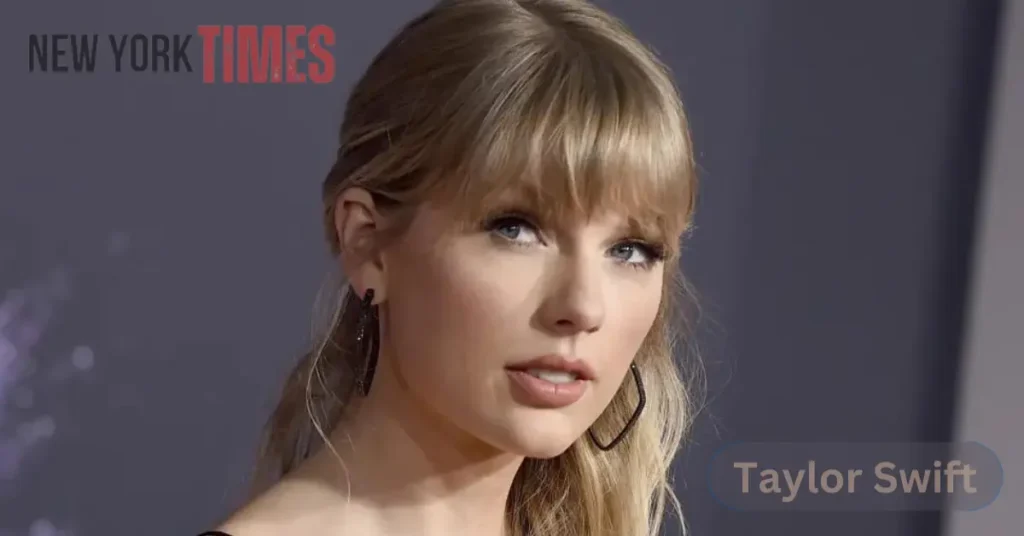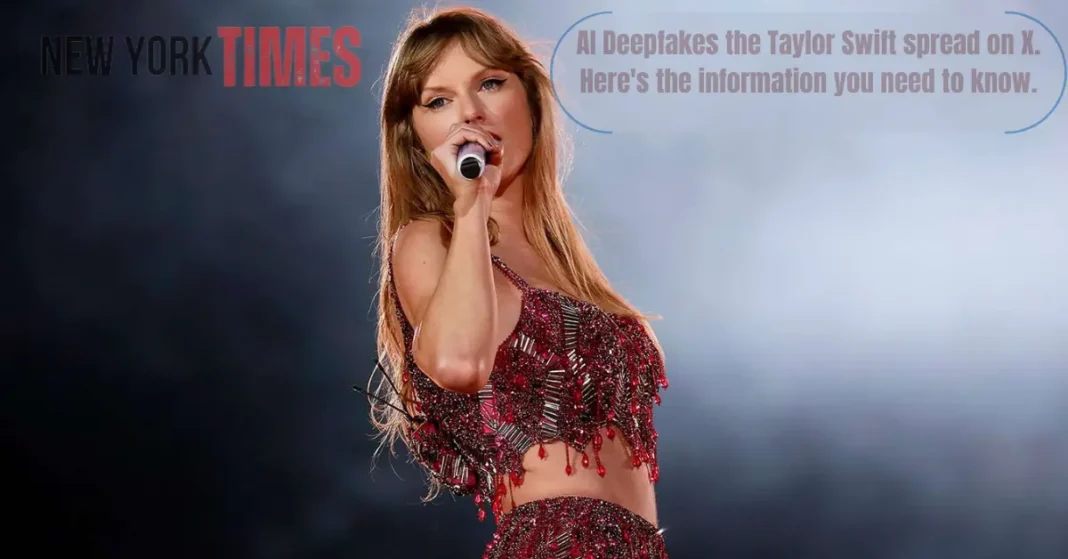Images of sexually explicit taylor swift nude that probably were produced by artificial intelligence were shared quickly across social media last week. Some were viewed millions of times before platforms such as X removed them according to a variety of news reports. These images, also known as deepfakes, ignited the debate about how to regulate AI.
This is what you need to know regarding the spreading of images, about fakes more generally, and the steps taken by governments to stop these fakes.

The facts
The most popular explicit posts featuring Swift has received over 45 million hits, The Verge stated prior to X deleted it. The images could have surfaced on the Telegram channel that has similar images, as per the 404 media.
In an attempt to make it difficult to find explicit images posted on social media, Swift’s followers shared a lot of posts with the hashtag, “Protect taylor swift nude.”
The representatives of Swift and X which was previously called Twitter did not immediately respond to the Washington Post’s requests for information on Friday morning.
What are the deepfakes?
Deepfakes are real-life fake videos or images made using audio and face-swapping technology. They’re often popular on social media platforms and have been improved in their ability to replicate the voice of a person. The methods to recognize an AI-made image have been unable to keep pace with with the speed of change, making it harder for platforms to detect the fake videos that aren’t safe to use. Celebrities have been warning fans not to be deceived by the fakes.
The ease of access to AI photography technology resulted in new tools to attract women. This tool allows almost everyone to make and upload naked images of them.
In the lead-up to the presidential election in 2024, AI is providing politicians a reason to discredit potentially damaging pieces of evidence as fakes created by AI. It’s happening at the exact that actual AI Deepfakes have been used in the spread of false information.
Are deepfakes illegal?
No law in the federal government makes it illegal to make fake deepfakes in the United States, but certain lawmakers have proposed bills to explore the possibility.
Then, in Congress, Rep. Joseph Morelle (D-N.Y.) proposed a bill known as”the Preventing Deepfakes of Intimate Images Act in which he states could make making these kinds of films a federal offense.
“The spread of AI-generated explicit images of taylor swift nude is appalling — and sadly, it’s happening to women everywhere, every day,” Morelle wrote Thursday on the website X.
In a press conference on at a press conference on Friday White House spokeswoman Karine Jean-Pierre stated that she was of the Biden administration and had been “alarmed” by the proliferation. She also said that social media companies are required to “prevent the spread of misinformation and nonconsensual intimate imagery of real people.”
president Biden released an executive decision in November. The White House statement said would define guidelines and best practices for identified AI-generated content. However, the order did not go far enough to make it mandatory for companies to label AI-generated images, videos, and audio.
It is the federal government that, however slow to take action, state lawmakers claim. States take a proactive approach, seeking to be the first in implementing safeguards against AI and other AI, with some states enacting measures to guard against the use of fakes during elections, such as Texas as well as California. Georgia and Virginia along with other states, have imposed a ban on the production of pornographic material that is not deemed to be consensual.
The First Amendment, since the videos are “technically forms of expression,” according to the Princeton Legal Journal. The videos that are not endorsed by the public however, will not be protected by the exemptions in the First Amendment that include libel profanity, defamation, and libel, the journal stated.
Some legal experts advise that counterfeit AI images are not under copyright protection as they are derived from databases containing millions of pictures.
How to detect a deepfake
Between December 2018 to December 2020, the number of fake video clips discovered online doubled every 6 months in the report of Sensity AI. It tracks deepfakes. Sensity has found that at most 90% of the videos were not consensual porn. The majority of them contain altered images of women.
Researchers discovered that by 2023, over 143,000 video clips that received over 4.2 billion viewers were posted to most popular websites for fake videos since AI-generated porn was exploding all over the web, The Washington Post published.
However, as technology has advanced, deciphering deepfakes is becoming more difficult. Google’s guidelines prohibit sexually explicit images from showing up in search results, however, fake porn still shows on search results. Some companies have developed tools to help determine whether a video is artificially generated, however, they aren’t perfect.
Researchers at the Massachusetts Institute of Technology Researchers researchers at the Massachusetts Institute of Technology found that machines and humans can recognize fake images at the same rate, and they both are prone to making mistakes while performing this. The researchers suggest that humans pay at the faces of people in videos and photos they believe could be fake, such as an individual’s glasses and facial hair, as well as the blinking rate and blinking, all of which could look strange.
Moderation on X
The photos of taylor swift nude became widely circulated throughout X and X, which eliminated the majority of its moderating shortly following Elon Musk took over the platform. In an announcement issued in the last few hours, X said it had taken down all taylor swift nude images, however, it did not provide a name for Swift.
“Posting Non-Consensual Nudity (NCN) images is strictly prohibited on X and we have a zero-tolerance policy towards such content,” the statement stated. “Our teams are currently taking down all images that are identified and taking appropriate action against those who posted these images. We’re constantly monitoring the situation so that additional violations are promptly addressed and the images are removed.” In response to the Post’s email asking for comments early on Friday, an automatic email stated: “Busy now, please check back later.”

Conclusion
The proliferation of AI-generated explicit images raises concerns about the regulation and ethical use of deepfake technology. While legislative efforts are underway, challenges persist in detecting and preventing the spread of such content, emphasizing the need for continued vigilance and technological advancements.
What are AI Deepfakes?
AI Deepfakes are realistic fake videos or images made using artificial intelligence, specifically advanced algorithms for deep learning. They typically involve face-swapping and audio manipulation techniques.
What’s the significance of the Taylor Swift incident on X?
The week before, explicit images from Taylor Swift, likely generated by AI and distributed on social media platforms such as X. The images were seen thousands of times before they were removed on X’s behalf.
What actions did X take to deal with the issue?
X previously also known as Twitter, has removed explicit pictures that were posted by Taylor Swift and issued a statement declaring that it has a zero-tolerance image of non-consensual sexuality. They pledged to monitor the situation and prompt action in the event of other violations.
Are Deepfakes illegal?
There is currently no specific law that is federally enforceable within the United States that makes the production of Deepfakes illegal. However, some lawmakers like Rep. Joseph Morelle, have introduced bills to tackle the issue at a federal level.
How are legislative initiatives currently being implemented to fight Deepfakes?
Rep. Joseph Morelle has introduced legislation called the “Preventing Deepfakes of Intimate Images Act” in Congress to make it illegal to create these types of content on the federal level. States are also taking proactive steps to protect themselves from AI, particularly in elections.
How does Deepfakes influence the political scene?
With the coming 2024 presidential election, AI-generated Deepfakes are a danger since politicians could employ them to discredit possibly damaging evidence by calling they are fakes created by AI.
What is the best way to spot the signs of a Deepfake?
Detection of Deepfakes has become more difficult with the advancement of technology. Although some companies have created methods to detect them, they are not completely foolproof. Researchers have found that machines and humans are susceptible to mistakes, which highlights the importance of a careful eye.
What is the role played by social media platforms in the fight against Deepfakes?
Platforms for social media, like X, are playing a significant function in the moderating and removal of Deepfake content. The challenges arise because of the speed at which content is distributed and the speed of dissemination, however, platforms are working to enforce stricter guidelines.
What is the government’s position regarding AI-generated content?
Although President Biden issued an executive order in November, establishing the guidelines to govern AI-generated media there’s a need for stricter rules. State lawmakers are taking steps in some states, and some are adopting measures to prevent AI misuse.
How can we protect ourselves from issues related to Deepfake?
It is recommended that users verify the authenticity of any content before sharing it and be wary of images that contain explicit or fake content. Awareness campaigns, such as the hashtag #ProtectTaylorSwift, seek to reduce the dissemination of this kind of material


